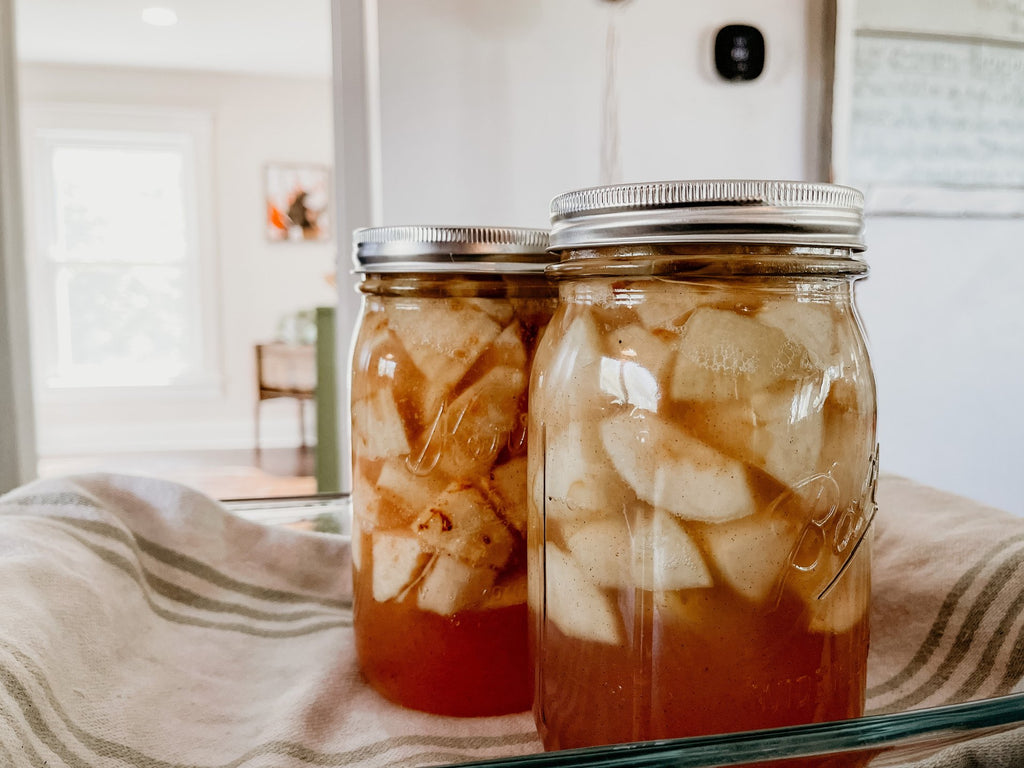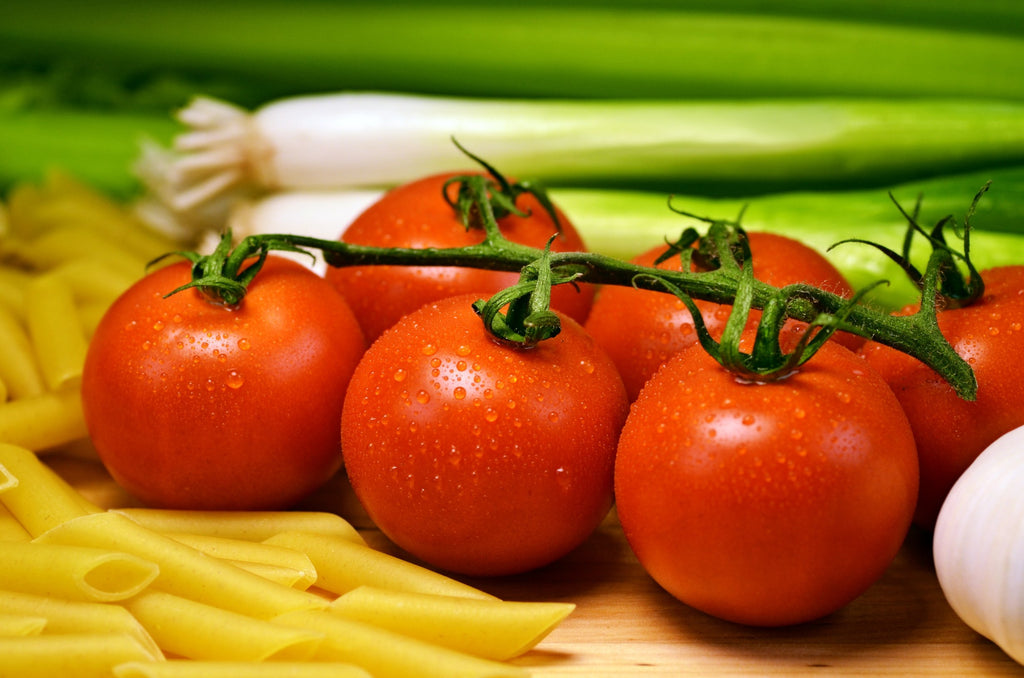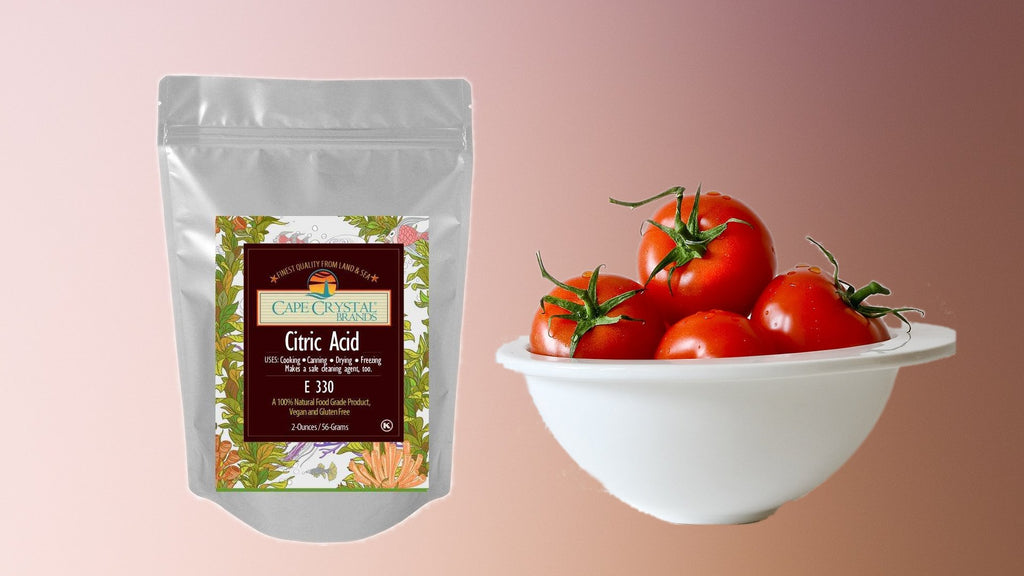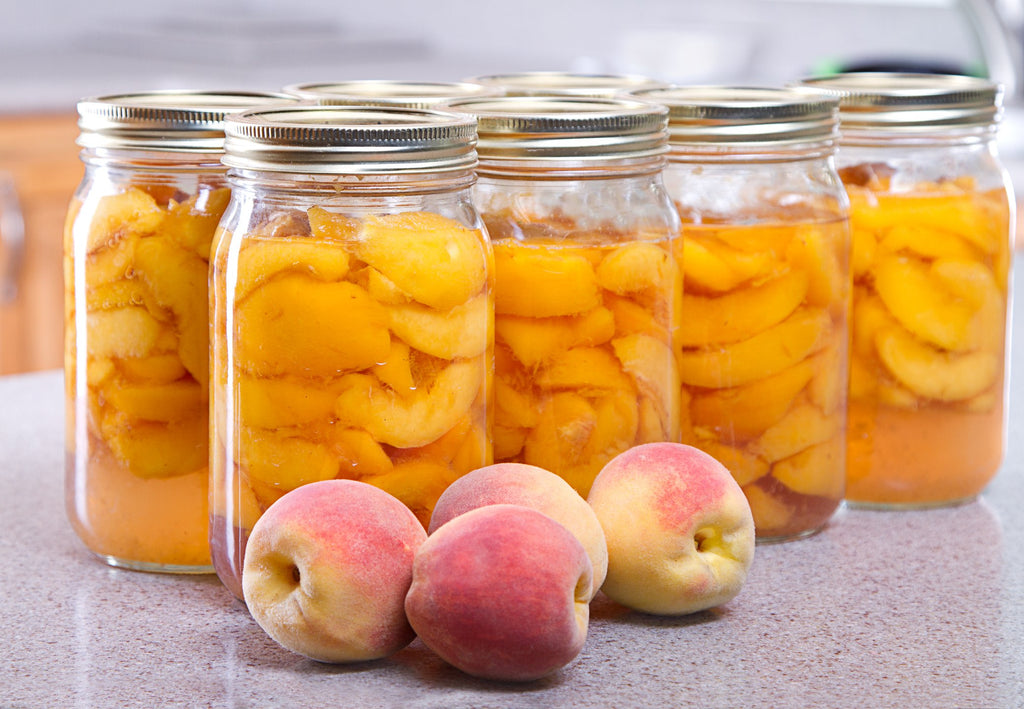
Using Citric Acid in your Recipes: Tips and Techniques for Home Canning
SUBSCRIBE TO OUR BLOG
Promotions, new products, and recipes.
For a tasty and fresh home canning experience, using citric acid (a natural citrus fruit compound) will really bring it to the next level. It offers numerous advantages that you wouldn’t get from other ingredients in your recipes. These benefits include improved flavor and an enhanced preserving process for your food. Let’s explore all things related to this particular ingredient: its forms, popular dishes, substitution ideas as well as helpful hints on how to make sure every canning session turns out perfectly.
Key Takeaways
-
Citric acid is an essential ingredient for home canning, providing benefits such as preserving color, enhancing flavor and increasing food safety.
-
Granular and powdered forms of citric acid are compared to determine the best application in recipes.
-
Alternatives like lemon juice or vinegar may be used but should be taken into consideration when adjusting measurements and following tested recipes.
The Benefits of Citric Acid in Home Canning

Citric acid is an ideal choice for home canning, and its use has numerous advantages. This special type of acid helps maintain the color of canned food, brings out their flavor without changing it naturally, and Raises the safety level by decreasing hazardous bacteria growth through higher levels of sourness or tartness (acidity). Knowing each benefit will provide a clearer understanding as to how citric acid boosts your homemade-canned meals. Not only does this natural ingredient preserve taste but also ensures that foods remain safe throughout processing while providing some additional pleasant experience with flavors you desire.
Preserving Color
Citric acid has a number of benefits when it comes to preserving the vibrant colors and longevity of home-canned fruits and vegetables, particularly juiced tomatoes. This important ingredient helps ensure that no one will be met with dull looking canned goods. Rather each jar is an eye-catching masterpiece. Not only does citric acid maintain color for visual appeal but it also works as natural preservative which extends their shelf life, making sure your homemade products last longer.
Enhancing Flavor
Using citric acid is an excellent way to enhance the flavor of canned vegetables and fruits. It adds a tangy taste that complements other ingredients used in canning recipes such as finely chopped celery put into pint jars along with tomatoes. This natural acid also helps retain original tastes while giving your creations extra zest!
Plus, adding some citric acid when making preserves will leave you wanting more - an enticing blend between sweet and sour combined together for optimum delight on the tongue.
Ensuring Food Safety
When it comes to home canning, citric acid is an important ingredient. Its primary purpose is food safety. By raising the acidic level of canned foods such as tomatoes, Clostridium botulinum and other potentially hazardous bacteria are deterred from growing. To ensure safe consumption when preserved at home, a pH value below 4.6 should be achieved—which citric acid helps accomplish in low-acid ingredients like those aforementioned tomatoes.
Citric acid also plays a part in making sure that your own homemade cans retain their quality for longer periods of time – provided you abide with suitable procedures for preserving them correctly according to tested recipes. Home canned goods made this way will not only be secure but remarkably delicious too so they remain enjoyable even after long storage durations due to its protective effects against spoilage linked with deterioration or change over time caused by microorganisms.
Forms of Citric Acid: Granular vs Powdered

Citric acid comes in two main variations, granular and powdered form. Both of these provide different benefits for those engaging in home canning activities and so it is important to be aware of their various uses. This section will detail the advantages, usage practices as well as applications when using either citric acid or its powder counterpart within your canning projects.
By gaining knowledge on both types you should have a better understanding about how best each could work depending on what you are trying to accomplish with your canned foods through use of this versatile acid!
Granular Citric Acid
Granular citric acid has a coarser texture than powdered, but it is simple to measure and dissolve. This makes it perfect for canning recipes that require an accurate amount of the product. This type of acid is used across many industries because its solubility in water enables seamless integration into home canning recipes without creating any odor or other issues.
It’s widely used in various sectors such as food processing, cleaning products production and bath bombs making owing to its natural preservative properties. All these make granulated citric acid very versatile and advantageous when compared with alternatives on the market. As well as being easy-to-use (especially useful during home preserving activities) it allows efficient cooking results since using too much doesn’t affect taste nor aroma negatively like other types might do if overused during preparation process.

Powdered Citric Acid
The powder form of citric acid has a few unique benefits, compared to its granular counterpart. To begin with, the fact that it is much finer makes it easier for use in home canning recipes requiring larger amounts of this type of acid. Since the concentration level here is higher than regular citric acid, such recipes are likely calling out specifically for powdered version when desiring a stronger acidic taste and texture. Accuracy during measuring and adding to your recipe according to directions given in order assure food safety will also be necessary should you decide on using powderedcitricacid instead .
Popular Recipes That Use Citric Acid
Citric acid is a staple in home canning recipes. It helps retain the food’s color, flavor and ensures safety. Let’s explore some of these commonly used citric acid-containing dishes: canned tomatoes, fruit preserves and pickled vegetables are all great examples of how this versatile component adds an extra deliciousness to your already nutritious meals. Canning with citric acids grants you fantastic taste as well as increased longevity for your fresh produce!
Canned Tomatoes
Citric acid is especially effective for canning tomatoes as it has the necessary acidic quality needed to store and preserve them without changing their flavor. As an alternative to vinegar or lemon juice, using citric acid maintains a balanced taste while making sure that food safety is still ensured. A recommended ratio of 1/4 teaspoon per pint of tomatoes provides proper acidity levels in home-canned products.
It’s important to follow tested recipes when working with canned tomatoes including picking fresh, firm ripened fruit, avoiding overripe ones, washing, trimming and peeling the produce before consumption plus maintaining accurate processing times throughout canning procedures, all this creates safe yet delicious results with unchanged flavors after being preserved at home through these methods involving citric acids.

Fruit Preserves
Using citric acid in making fruit preserves is essential because it helps to maintain the vibrant hue of fruits, amplifying their flavor and improving longevity. It raises the level of acids in jams, jellies or marmalades which inhibits bacteria growth while also keeping them safe and tasty for a longer period. This component serves as a valuable tool when creating your favorite preserve recipes that everyone will enjoy
Pickled Vegetables
When it comes to pickling recipes, citric acid is usually added for several reasons. This common ingredient can help increase the acidity of your brine and also guarantee food safety standards are met. 1/4-1/2 teaspoon of this sour additive will add a distinct tangy flavor that wonderfully complements any recipe you have in mind!
This perfect balance between taste and safety makes citric acid an important part of any pantry staple or culinary delight, ideal for creating delicious yet secure dishes with pickled vegetables as its highlight.
Try Citric Acid in Your Recipes Yourself
Pick up a packet of Cape Crystal Brands Citric Acid. You'll be gald you did.
Alternatives to Citric Acid in Home Canning
Citric acid is a go-to choice for home canning, but those who want something different or don’t have access to it may opt for alternatives. In this article, we will discuss lemon juice and vinegar as possible substitutes that could be employed in the process of preserving food through canning. It’s necessary to keep in mind these options might change how your dishes taste so choose the proper acidic ingredient based on preferences and what recipe you need it for.
Lemon Juice
Home canning uses acid to ensure food safety, and citric acid is commonly used. Substituting with lemon juice or lime juice are viable options which might impart a citrus flavor. If the recipe calls for it though one may find adding a tablespoon of bottled lemon juice per pint of tomatoes works well. Not only does this provide increased levels of necessary acids but also provides an alternative option from using straight citric acid.
Vinegar
When it comes to home canning, vinegar is an option that many turn to for pickling recipes. Its tangy flavor could potentially detract from the true flavors of low acid food like canned tomatoes where two tablespoons should be added per pint if this alternative is desired instead of citric acid.
Ultimately, deciding between these two acids depends on personal taste and any specific instructions within your chosen recipe for preserving food with a home canning method.
Tips for Using Citric Acid in Home Canning
In order to maximize the use of citric acid in your home canning endeavors, some key points and best practices should be adhered to. These include: accurately measuring and adding it according to recipe directions, preserving its potency by properly storing it, and following tested recipes for safety reasons when pressure-canning.
The next part will discuss these techniques so that you may make the most out of this acid’s applications while engaging in canned food production with a pressure canner at home.
Measuring and Adding Citric Acid
The addition of citric acid to home canning recipes must be precise in order for the food’s necessary level of acidity and safety standards to remain intact. Using a specific measuring spoon or cup, gradually add small amounts at a time while stirring it into the mix evenly.
By following this method when adding your citric acid, you will have assurance that both your canned goods and recipe are able to maintain their integrity by preserving an accurate amount of tartness.
Storing Citric Acid
It is important to store citric acid in the correct manner for it to remain potent and available when you require it for home canning recipes. Be sure that your supply of this acid stays away from direct sunlight, moisture or humidity by keeping them somewhere dry and cool. Doing so will allow its shelf life to stay intact as well as ensure effective use of said item during any kind of canning process you have planned ahead.
Following Tested Recipes
Staying true to instructions and following the canning process accurately is a major component of incorporating citric acid into home preserving. Doing so guarantees that your canned foods will be safe, tasty, and keep for long-term consumption.
By sticking closely to recipes as well as appropriate techniques in terms of using this particular acid while doing home canning you are able to ensure freshness and safety with regard to all food being preserved through cans at home.
In home canning, citric acid offers various benefits such as maintaining the food’s color and flavor while increasing its safety through increased acidity. It is available in granular or powdered forms with a measuring spoon/cup for appropriate dosage when adding to recipes. If you prefer alternatives like lemon juice and vinegar which may slightly alter the taste of your canned food, remember to store it away from direct sunlight, moisture and humidity so that they retain their full potency.
Summary
Home canning with citric acid offers a multitude of benefits, such as maintaining color, imparting flavor and increasing food safety. To take advantage of these advantages it is important to be aware about the different forms available for using this acid in your home-canned goods, plus some useful tips on measuring and storage that will help enhance its effects. Overall by tapping into the power of citric acid you open up amazing possibilities when preserving foods.
Frequently Asked Questions
What does citric acid do to dishes?
Citric acid is a food additive regularly used to enhance flavor and control the pH balance of dishes. It can also be found in its powder form, which provides an ideal source of tartness or added sourness as desired. This versatile ingredient has many applications within cuisine. It commonly appears in canned goods, vegetables that have been pre-cut for convenience, juices, candy and much more.
Why avoid citric acid in food?
For some individuals, citric acid can be an allergen and so it may be best to restrict its consumption in food. Citric acid is widely used as a preservative in packaged foods or drinks to prolong the shelf life and also offers tartness, increased sourness, reinforces taste appeal , thickens items up, even helps against discoloring. This type of acid provides Flavoring enhancements .
Does citric acid change flavor?
Citric acid can adjust the taste of a food or beverage as it modifies both its degree of tartness and flavor. This acidic component has an impact on what we enjoy when eating or drinking something, resulting in variations to our beloved dishes’ tastes.
Does cooking destroy citric acid?
Cooking does not destroy citric acid; the pH may change ever so slightly, but the concentration remains the same.
Is citric acid better than lemon juice for canning?
When canning, it is advisable to use citric acid as opposed to lemon juice due its absense of flavor that won’t affect the taste of the food. As an acid, citric acid still provides a preservation effect without any changes in aroma or flavor for foods like those used in canning processes.
For further reading:
Using Citric Acid in Your Recipes
Using Citric Acid in Your Soap Making
How to Dye with Citric Acid: A Comprehensive Guide
Making Bath Bombs with Citric Acid
The Versitile World of Citric Acid

About the Editor
About the Chef Edmund: Chef Edmund is the Founder of Cape Crystal Brands and EnvironMolds. He is the author of several non-fiction “How-to” books, past publisher of the ArtMolds Journal Magazine and six cookbooks available for download on this site. He lives and breathes his food blogs as both writer and editor. You can follow him on Twitter and Linkedin.


|
About the Author Ed is the founder of Cape Crystal Brands, editor of the Beginner’s Guide to Hydrocolloids, and a passionate advocate for making food science accessible to all. Discover premium ingredients, expert resources, and free formulation tools at capecrystalbrands.com/tools. — Ed |
- Choosing a selection results in a full page refresh.




2 comments
Anonymous
Making sauerkraut with citric acid is a bit unconventional, as traditional sauerkraut relies on natural fermentation for its sour taste. However, if you’d like to try a version using citric acid for its tangy flavor, here’s a simple recipe. Let’s do it, Bruce!
Ingredients:
1 medium-sized head of cabbage (about 2-3 pounds)
1-2 tablespoons of non-iodized salt (sea salt or kosher salt)
¼ – ½ teaspoon of citric acid (adjust to taste)
Optional: Caraway seeds, juniper berries, or other spices for flavor
Equipment:
Large mixing bowl
Knife and cutting board
Fermentation jar or airtight container
Fermentation weight or small jar (to keep cabbage submerged)
Instructions:
Prepare the Cabbage: Remove the outer leaves of the cabbage, and slice the cabbage thinly. Discard the core.
Mix with Salt and Citric Acid: Place the sliced cabbage in a large bowl. Add salt and citric acid. Optionally, you can add spices like caraway seeds for additional flavor.
Massage the Cabbage: Use your hands to massage and squeeze the cabbage. This process will break down the cellular structure of the cabbage and help it release its natural juices. Continue massaging until the cabbage starts to wilt and release liquid, about 5 to 10 minutes.
Pack the Cabbage into the Jar: Transfer the cabbage into your fermentation jar, pressing it down firmly with your fist or a tamper to encourage the liquid to rise and cover the cabbage. The goal is to eliminate air pockets and ensure the cabbage is submerged under its liquid.
Weigh Down the Cabbage: Place a fermentation weight or a small, clean jar filled with water on top of the cabbage to keep it submerged under the liquid. It’s crucial that the cabbage stays submerged to prevent mold.
Ferment: Close the jar loosely to allow gases to escape or use an airlock lid if you have one. Store the jar at room temperature, away from direct sunlight. The ideal fermentation temperature is between 65-75°F (18-24°C).
Check and Taste: Start checking the sauerkraut after 3 days. The fermentation process can take anywhere from a few days to a few weeks, depending on your taste preference and the room temperature. The sauerkraut is ready when it’s as sour as you like.
Store: Once the sauerkraut reaches your desired flavor and texture, tighten the lid and store it in the refrigerator. This will slow down the fermentation process and help preserve the sauerkraut.
Notes:
Adjusting Tartness: The amount of citric acid can be adjusted according to your taste preference. Start with a smaller amount and add more if needed.
No Water Needed: Normally, no additional water is needed, as the salt will draw out sufficient liquid from the cabbage.
Taste As You Go: Fermentation is a variable process, so taste your sauerkraut regularly and adjust your seasonings as needed.
Enjoy your homemade sauerkraut with a unique twist!
Ich genieße das Essen!
Bruce clara
Making sauerkraut using citric acid